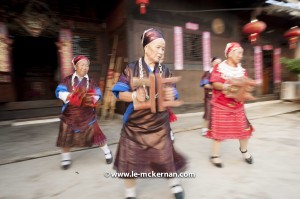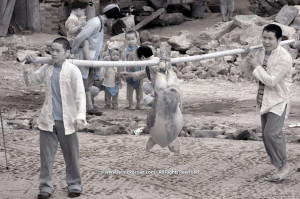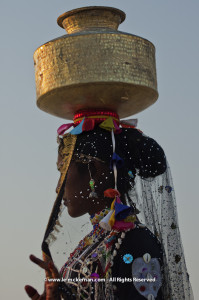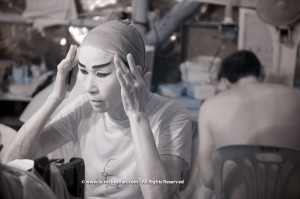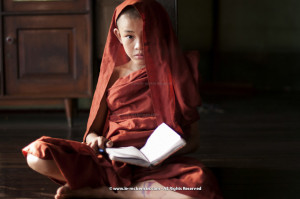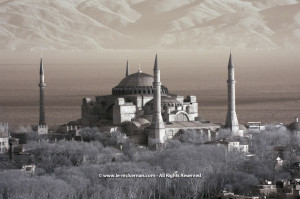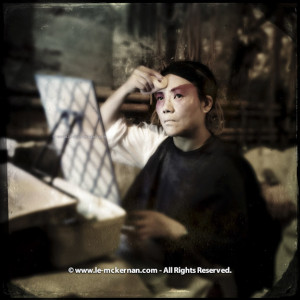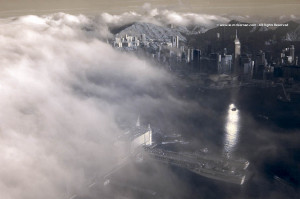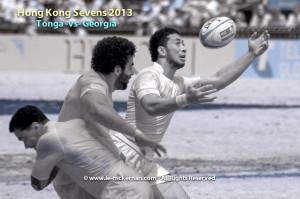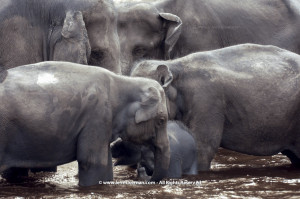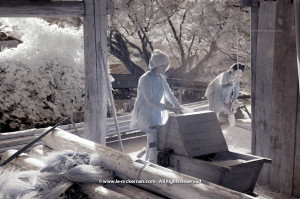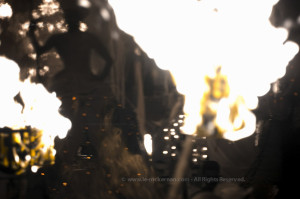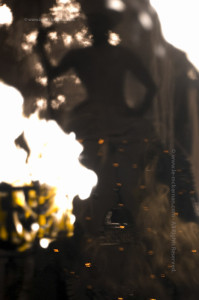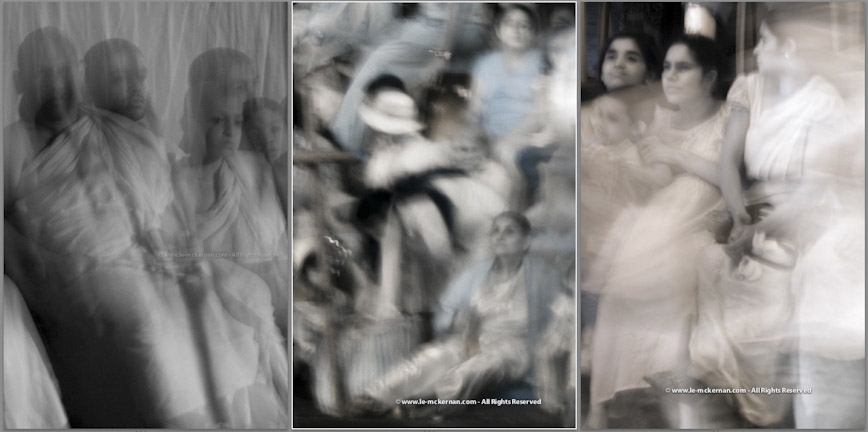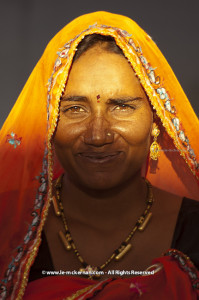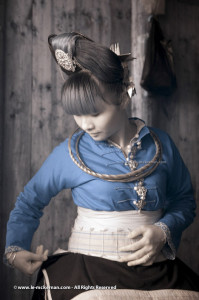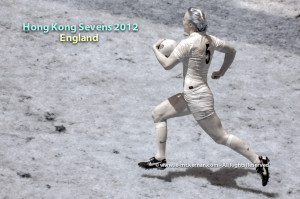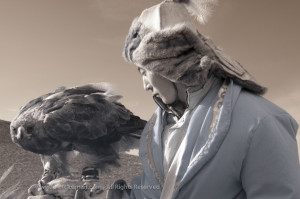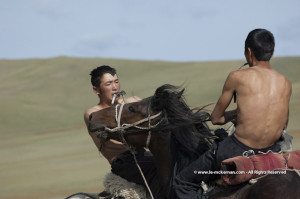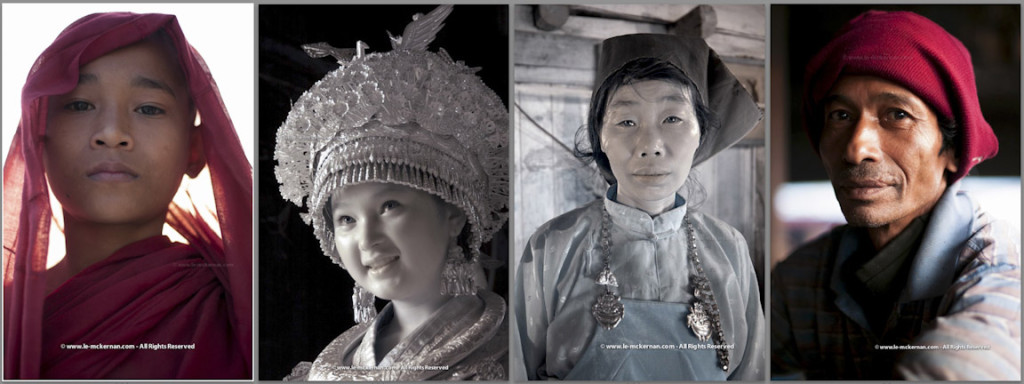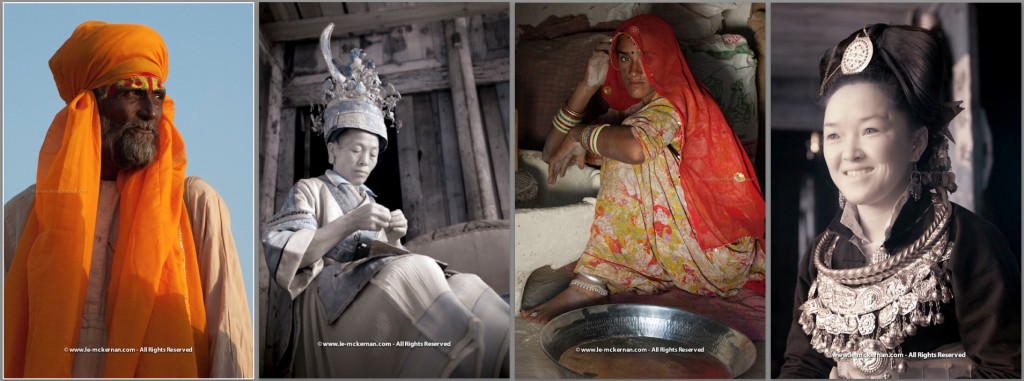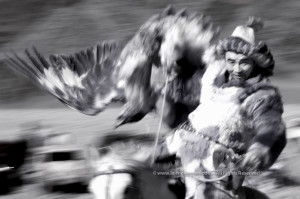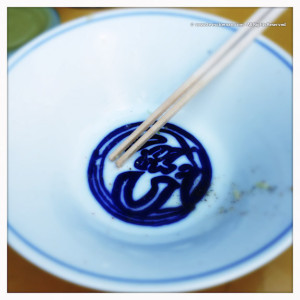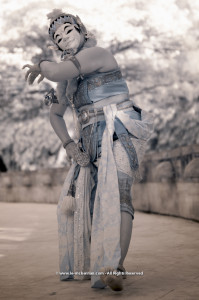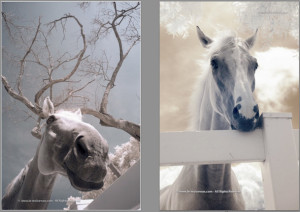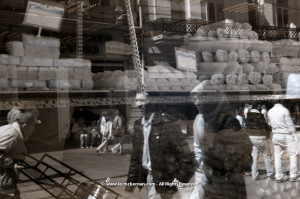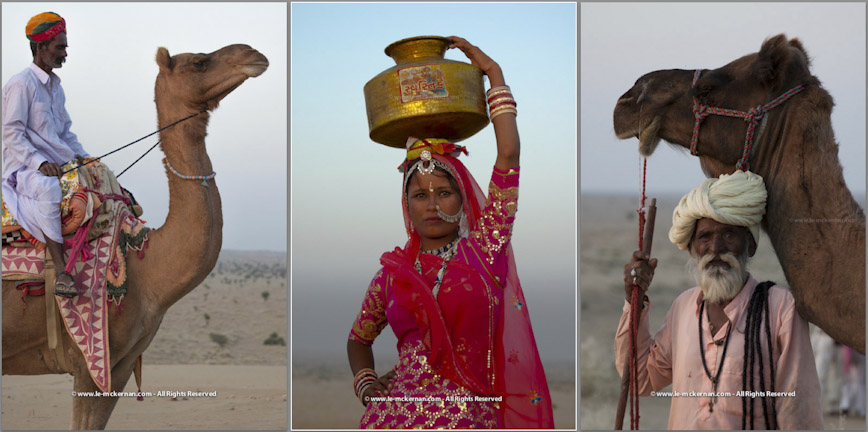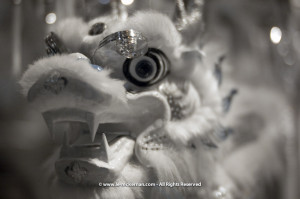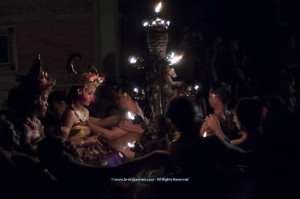Travel Blog – Guizhou Province, China
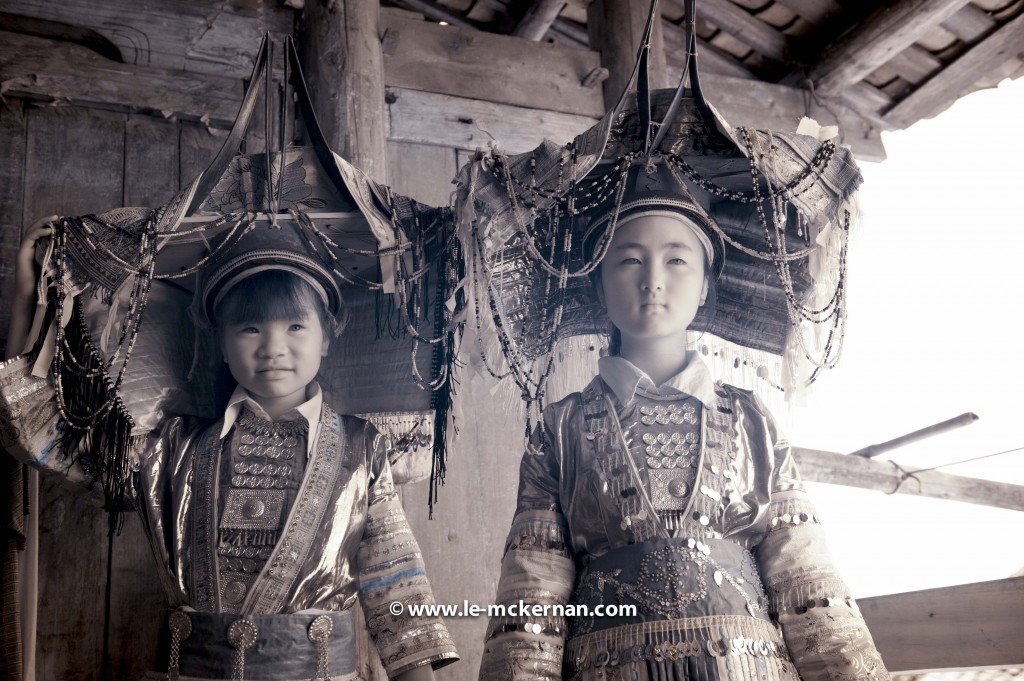
August 2012
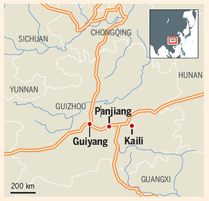
Equipped with news footage about the torrential rain in China and with an email from our group leader to bring along proper rain gear, I had visions of mud, mud, more mud, grey skies, and lots of rain — in other words, I had to pack for a typical British summer day! To this end, I’d packed my green Yorkshire wellies for the expected deluge.
Fortunately, the worst of the rain had passed by the time we arrived and the most we got was a little drizzle every now and then. But unfortunately, there were landslides everywhere and this impacted our itinerary in a BIG way. As such, we missed a major festival as the roads were impassable. In addition, another festival set along the riverbank (and in the river itself!) was cancelled due to inclement weather. Furthermore, a village that is only accessible via a natural limestone cave tunnel was ruled too dangerous for us to reach because in the narrowest part of the cave, the water was chest-high and fast moving (more importantly, our camera gear would have gotten wet!).
With our plans in disarray, we had to rely on our local fixers’ extensive knowledge and networks (as well as a good dosage of serendipity). For the most part, this was successful. The most memorable of these encounters was an evening funeral at a neighbouring village. We honestly did not know what to expect, but, we knew that this invitation was too incredible to pass up. So, we hopped on the bus and hit the muddy and bumpy mountainous roads with vertiginous drops (fortunately, it was too dark to see the drops) and hairpin turns. The drive to the village took much longer than we expected (due to the poor road condition). Once we arrived in the village, we knew immediately that we were going to have an unforgettable experience. The first clue was the hauntingly beautiful sounds coming from the Lusheng pipes (made from bamboo). The second clue was the huge turnout — there must have hundreds of people from the village (and neighbouring villages). And, the third clue was the start of the fireworks. We arrived just in time — the funeral festivities had just begun.
It was a funeral unlike anything that I have experienced before. In the main house, the mood was somber. But outside the house, there was music, dancing, and general merriment. This continued throughout the night — and even while the shaman performed his rituals.
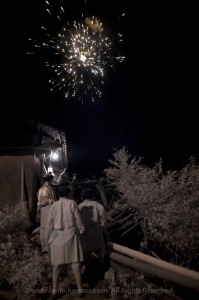
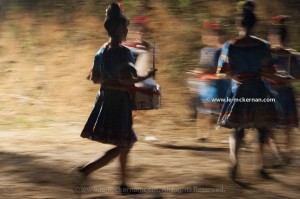
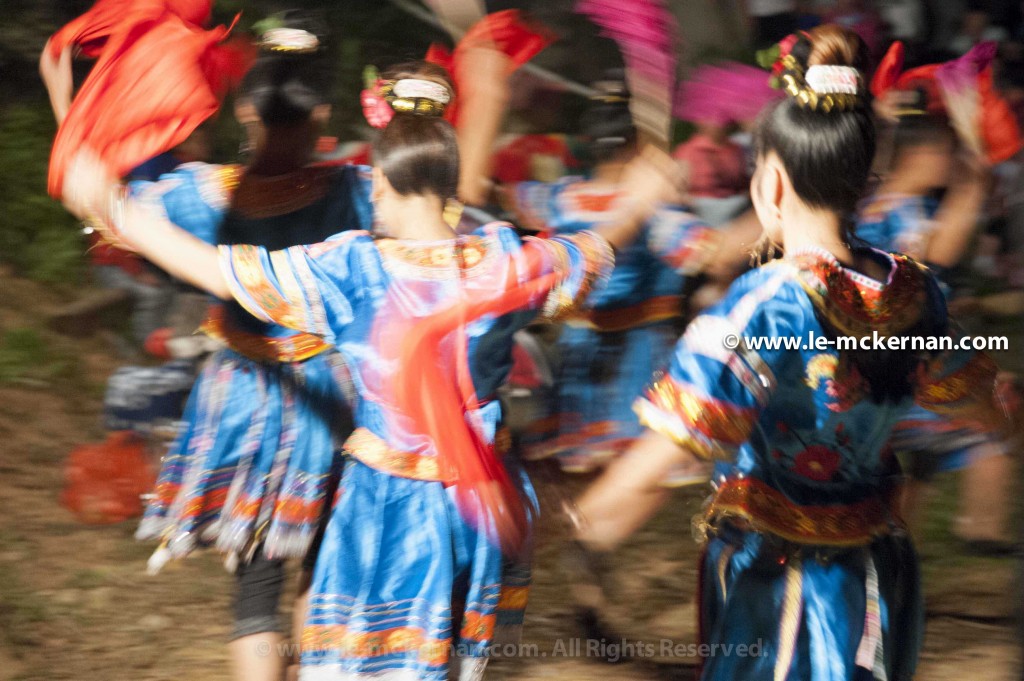
The funeral was for Mr. Liu Wen Shu, a 66 year old ex school teacher at Wuyao Village. The Miaos believe in burying their dead only on auspicious dates and as such, Mr. Liu’s funeral was delayed until this evening. As such, the body was kept in a refrigerated casket in the corner of the room. In the other corner, the family lit candles and provided offerings to the spirits. The immediate family sat by the casket while the shaman and his assistant conduct the funeral ceremony.
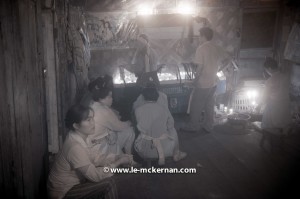
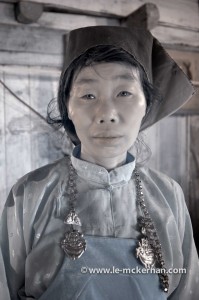
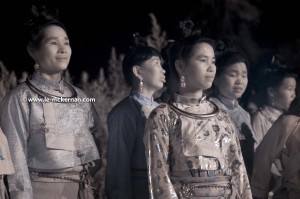
Although we did not know the deceased or his family, as foreign visitors, we were greeted warmly and treated as honoured guests. At around 11:30 PM, we could see lightening in the near horizon and sensed that a nasty storm was brewing. Mindful of how bad the road was under good condition, we were keen to leave before it started to rain. Once the word got out that we were about to leave, the family invited us to stay on but we had to politely decline. The festivities were in full swing as we were leaving and my parting memory of this incredible night was the bull-fighting dance.
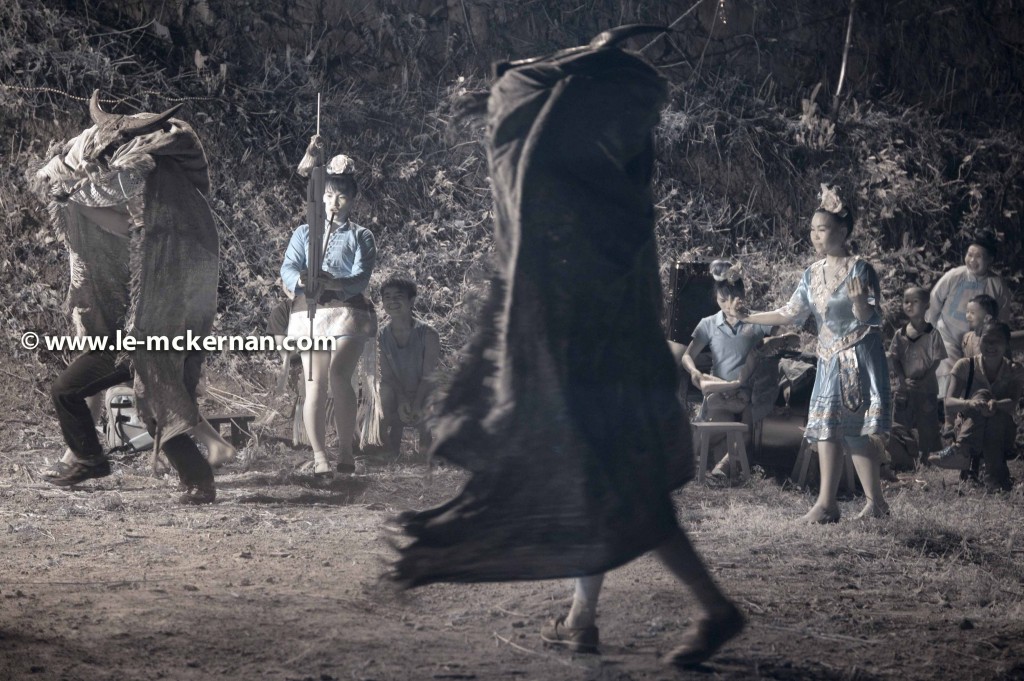
Mr. Lui’s funderal wasn’t the only funeral that we came across. Quite coincidently and accidentally, we stumbled upon another wake in a different village earlier in the day. The ceremony actually started the previous day but the celebration was still under way when we arrived. (We should have known that something was going on as we saw three men fast asleep on the road as we entered the village!) We were drawn to the event by the commotion of the women washing the dishes and preparing more food. Once there, the men seized upon us and bestowed tremendous hospitality. Although we politely declined the food and drinks (since we just had our lunch), the men were jovially persistent (as you can see from the below photographs).

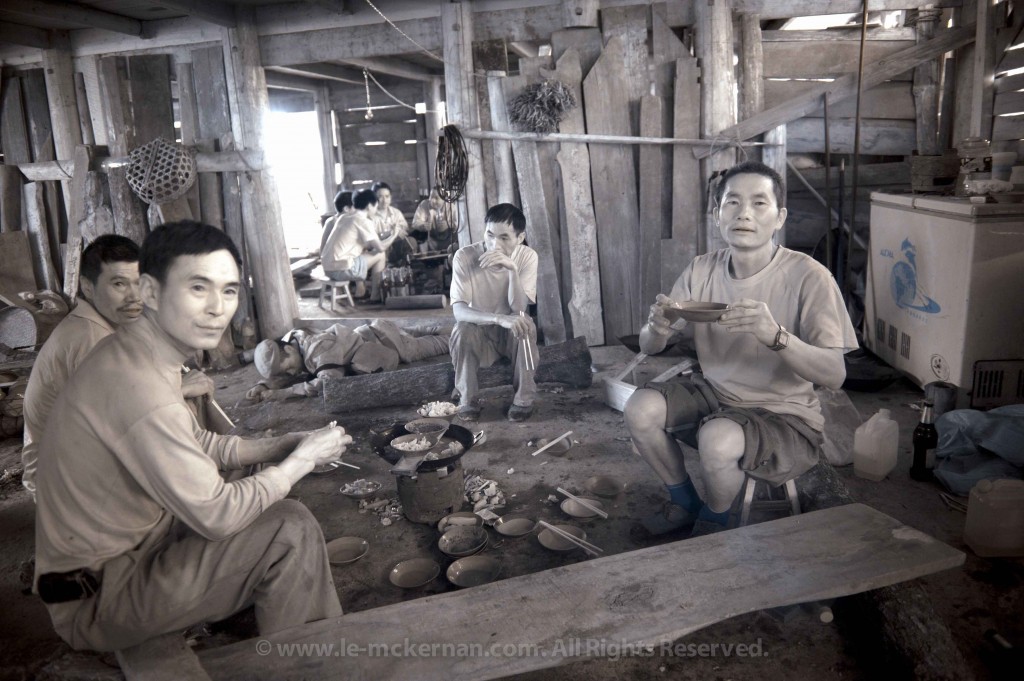
The main goal of this trip was to explore and photograph the lesser-known festivals of the Miao (known more commonly as the Hmong) — one of province’s largest ethnic groups. Although we missed out on a few festivals on the original itinerary, the local guides helped find alternative festivals and events. The first was a harvest festival at Shuiguo village (Jiuqian township) whereby the shaman made a blessing for rain and good harvest by a pond. As part of this ritual, the locals provided food for the spirits (pig head, fish, fruit, and rice). In addition, a pig and some ducks were thrown into the pond and the local men waded into the water to catch the animals and bring them ashore. This symbolized reaping the fertility from the land and water. In addition, the local women performed a song to ward off evil spirits.
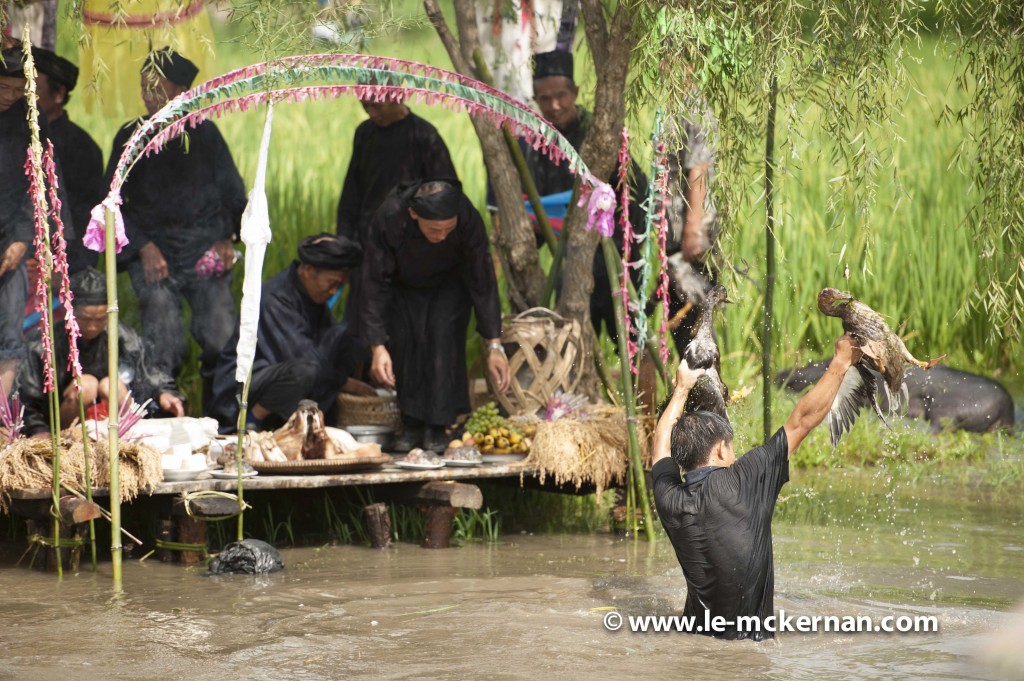
The next festival was held at the Huang Gang village. As we arrived before the festival started, we wandered around the small village. At the school, the children were in their festival fineries. They too were waiting for the festival to begin. But in the interim, they played. It was a joy to see kids being kids.

The first mark of the start was the sound of the Lushseng pipes. A procession including the shaman, his assistants, the villagers and the children followed. The last in the procession were the men carrying the sacrificial pig. Ontop of a raised platform in the middle of the village square, the shaman beat a drum while turning to face all four directions (north, west, south and east). Interspersed were songs and dances — some must have been either very bawdy or comical as the audience reacted to the lyrics with great laughter. At the end, the entire procession grabbed hands and formed circles and danced. Some in our group were caught up in the merriment and had to stop photographing and join in.

Video (23 secs) – link to Facebook
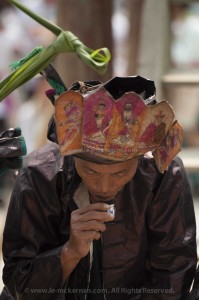
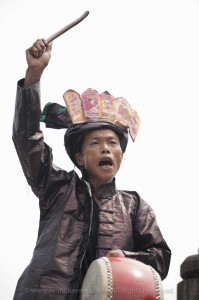
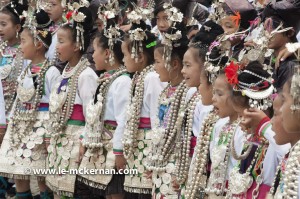

the poor pig gets it !!!
After this ceremony, there was a temporary break whereby the locals returned home for lunch. We took advantage of this lull to wander around the village and found the sacrificed pig roasting over an open fire. The local butcher then cleaned, gutted, and carved the pig. At one point, we saw one man blowing air directly in the intestines — we were later told that this is to move the contents of the intestine together so that it would be easier to remove! (For pictures and video on the pig sacrifice, please check out the food blog on Guizhou Province.)
After the long lunch break, the festival continued with a harvest/fertility ritual whereby a small group of teenagers waded into the village pond to catch the catfishes. The abundance of catfishes symbolized the upcoming harvest bounty. But, the in truth, it looked more like an opportunity for the villagers to have fun — the whole ritual turned into a massive mud fight!

The most surprising festival we visisted during our 2 weeks in Guizhou Province was the Climbing Mountain Festival at Linshan on Shixian Mountain. This festival was said to celebrate the day when Avolokitasvara Bodhisattva achieved enlightenment. But, it was a huge shock for us to see dog fighting and bull fighting featured at what was a Buddhist festival! Atop the mountain was a temple where some worshippers burned incense, but, the core of this festival appeared to be the fights (and the gambling.) Upon closer inspection, we noticed that there were very few Miao minorities at this festival — it seemed to have been usurped by other groups.
Fortunately, it was NOT a death contest — the first animal to back off from the fight automatically lost. Nonetheless it was uncomfortable to watch the dogs get bloodied. The bull fights were a little easier to watch as they were quicker to yield. One fight in particular lasted only 2 seconds as it was clear that one animal simply didn’t want to fight. Almost immediately, it turned away and the fight was declared over. However, in another case, there was a sustained fight and the two beasts were quite pugnacious! The fight actually spilled over to where the crowds were standing. Luckily, the locals knew to be nimble during the bull fights and thus got out of the way just in time. The keepers had great difficulties getting the animals back into the fighting pen again. It was interesting to observe the behaviour of one bull — it was angry and not cooperative at all, but, the moment one of the keepers grabbed control of it’s nosering, the bull immediately became docile.
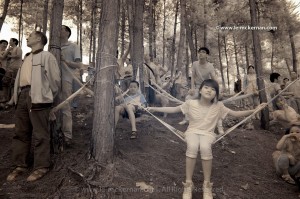

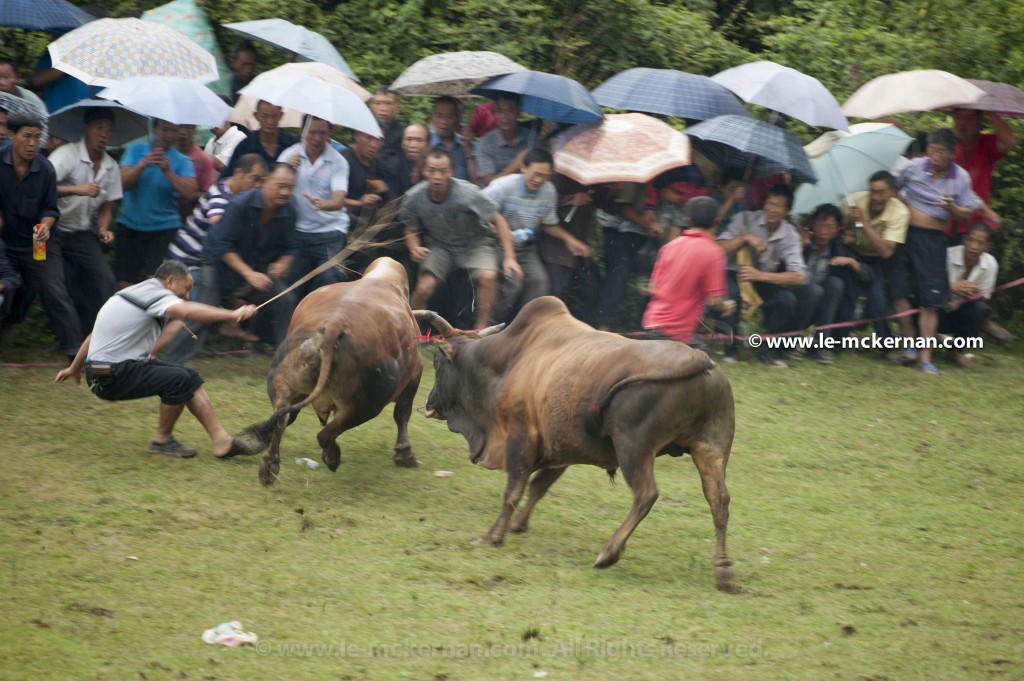
As an antidote to the blood sport, the next festival was more genteel. There was a Miao dancing competition and about 5 sub-tribes attended. The competing groups ran the full gamet from seasoned veterans to young kids. The commonality was that the women and girls were festooned with elaborate silver jewelery and colorful costumes.
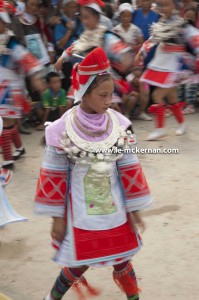
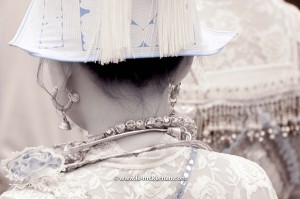
In between the various festivals, our guides helped organize home visits with different Miao tribes. In some cases, the Miao kindly donned their festival clothes and permitted us to photograph them. In addition, our local guides introduced us to some weavers and artisans in the region. One in particular was a master of the ‘cloth folding embroidery’ technique. Her festival coat took six years to complete as the technique is highly intricate. Her head piece was inspired by the long-horn headpiece but instead of using the traditional silver metal, she used only embroidered cloth to make this remarkable and highly unique hat! Some of our favorite photographs from these visits are:
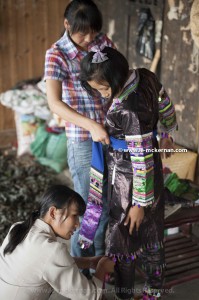

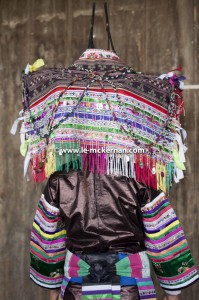
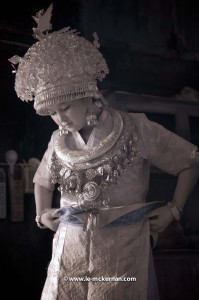
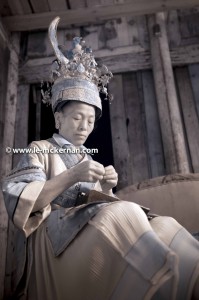
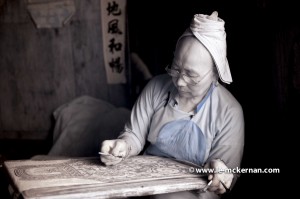

A few days later, we attended our very last festival of the trip. This was a major festival held in Kaihuai town in which the former governor of Guizhou Province attended. Given that he was a ‘big potato’, a pig was sacrificed in his honor. His attendance attracted more Miao sub-tribes and we were treated with AMAZING tribal costumes and dances. A big ‘plus’ was that we arrived early and were most fortunate to see the ladies ‘gear up’ for the festival.

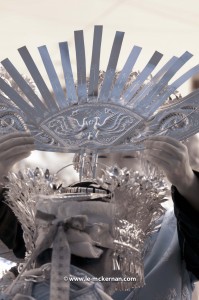
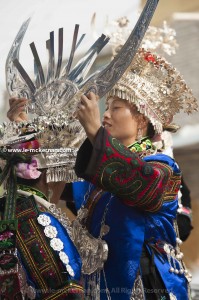
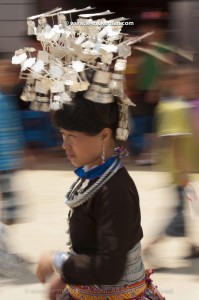
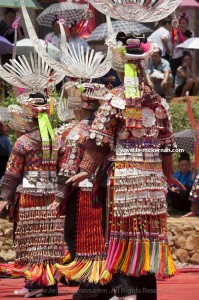
After the festival, there was an enormous traffic jam — the kind that only happened in Asia. Rather than sweat it out, we decided to enjoy cold beer in a nearby restaurant until the situation improved.
A quick word about the roads in Guizhou Province. Bruce and I actually joked that because of our horse riding experience, we knew how to land on our butt properly each time we flew into the air when going over a pot hole. On some roads, the condition was pitiful — in fact, one member of our group actually dislocated her shoulder when we went over a pot hole a little too quickly (she had to go to the hospital to reset her shoulder)! But, on the flip side of the equation, we saw miles and miles of newly paved roads and new highways. Construction in Guizhou Province was mind-blowing — it just went on and on and on and on — to the point that some roads actually lead to nowhere. We’ve been on major paved roads that suddenly stopped — the road building was still in progress! Furthermore, we have been on new highways whereby even the petrol stations and rest stops hadn’t been staffed yet.
Technically speaking, our travels around Guizhou Province covered only a small area. But, there were days whereby we spent long hours getting to places that were technically not that far away (i.e. as the crow flies). Guizhou Province is 80% mountainous and as such, we were on country roads more often than not. This meant dirt roads, rock slides, and narrow passes. When the mountain road network is modernized, this will be a double-edged sword for the Miao hill tribes. On the one hand, it will make their life easier; but on the other hand, the local traditions and characteristics are at risk of getting muddled as they become less isolated. As such, we have decided to visit this region again in the near future before modernization destroys what makes the hill tribes and their festivals so special.
For more photographs from this trip, please click on this link.
+ + + +
We traveled on a private tour organized by Nevada Wier (www.nevadawier.com) in conjunction with Lin Xue Biao (owner of Global Expeditions at glbexpd@public.cd.sc.cn) and Lee Maoqing, an expert in the region.
Travel Blog: Food in Guizhou, China
*** WARNING: for those who are squeamish about animal husbandry and/or are sensitive about the treatment of animals, then please do NOT read this blog. Photos include dead animals as well as animals in distress.
+ + + + + + + + + + + + + + + + + + + +
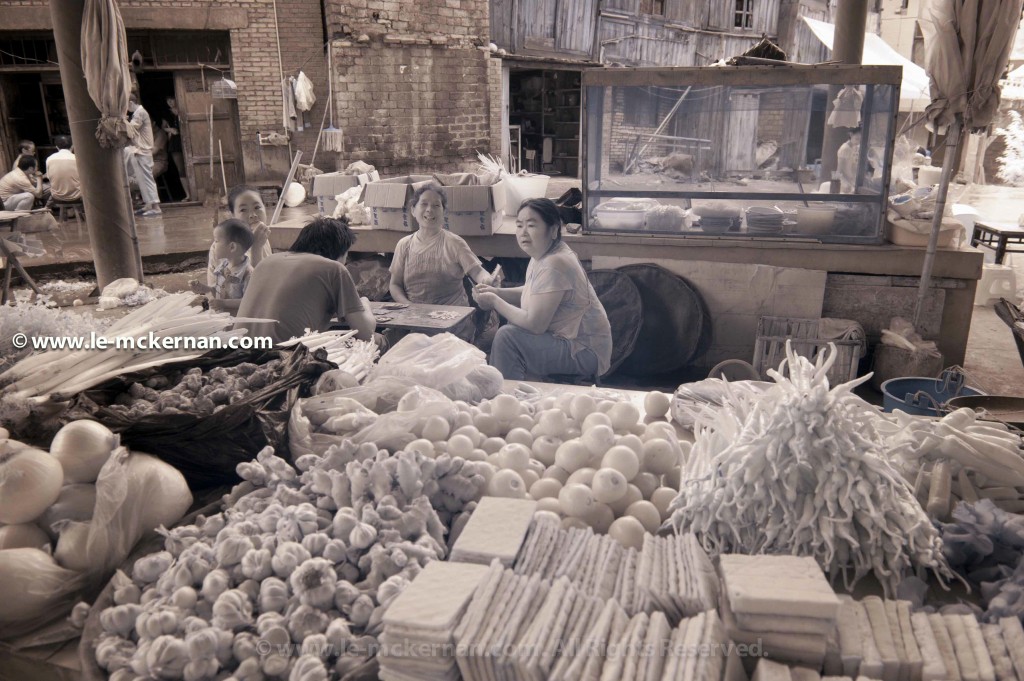
Market vendors play card during a lull in the afternoon
RICE:
As everyone in the West knows, China is the land of rice. And, yes, there was rice, rice, rice everywhere. From rice in a bowl to rice noodles to rice soup (not congee or porridge — but rather, the leftover liquid when cooking rice), we had rice every day. While we were not surprised by the omnipresence of rice, what was surprising was that rice was served AFTER the main dishes were served. In the West, rice is served with the Chinese dishes — it is the spaghetti to the bolognese sauce. However, on this trip, rice actually became almost an afterthought for our group as we started tucking into our food the moment the main dishes were laid out.
PIGS:
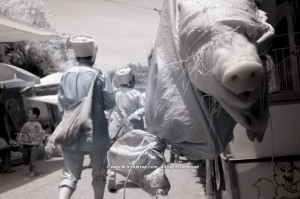
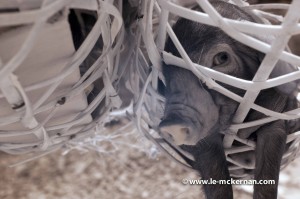
China is not the place to be reincarnated as a pig! Pork is as ubiquitous as rice on the menu. (TIP: if you are a vegetarian, then be sure to be clear that you don’t eat meat because in some places ‘vegetarian’ may mean ‘less meat’ rather than ‘no meat’. In particular, tofu dishes are often topped with minced pork.) In addition to being on the menu, pigs also appear to be the animal of choice when it comes to animal sacrifices at the festivals. While there, we’d witnessed two pig sacrifices — one death was quick whereas the other sadly resulted in the pig squealing for up to four minutes!
At a village festival, once the pig was killed, it was taken away and roasted ontop of an open fire. The local men then scraped the burnt skin off with sharp knives while a pack of village dogs eargerly (but carefully) surround the irresistible smelling carcass. Once the tough outer skin was removed, the men disembowelled the pig. This included blowing air into the intestines so that the contents are bunched up and easier to remove.
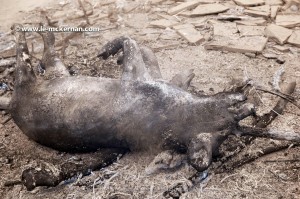
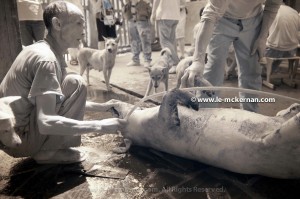
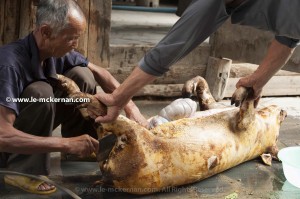
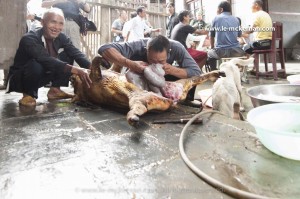
Pork is as central in death as it is central in life in Guizhou. During our 2 weeks in the region, we unexpectedly stumbled across (and were warmly welcomed at) two separate funeral celebrations. At the first event, the men in the villages held an equivalent to what we would recognized as a multi-day Irish wake. Our first warning to the amount of celebration commited by the men the night before was the fact that we found three men fast asleep on the road as we entered the village !!! Inside the town hive, we found the women preparing more food (pork and rice) whilst the men were eating, drinking and (for some) sleeping. In the first picture, there is a man sleeping on the floor between the two tables and in the second picture, the man on the chair is fast asleep.
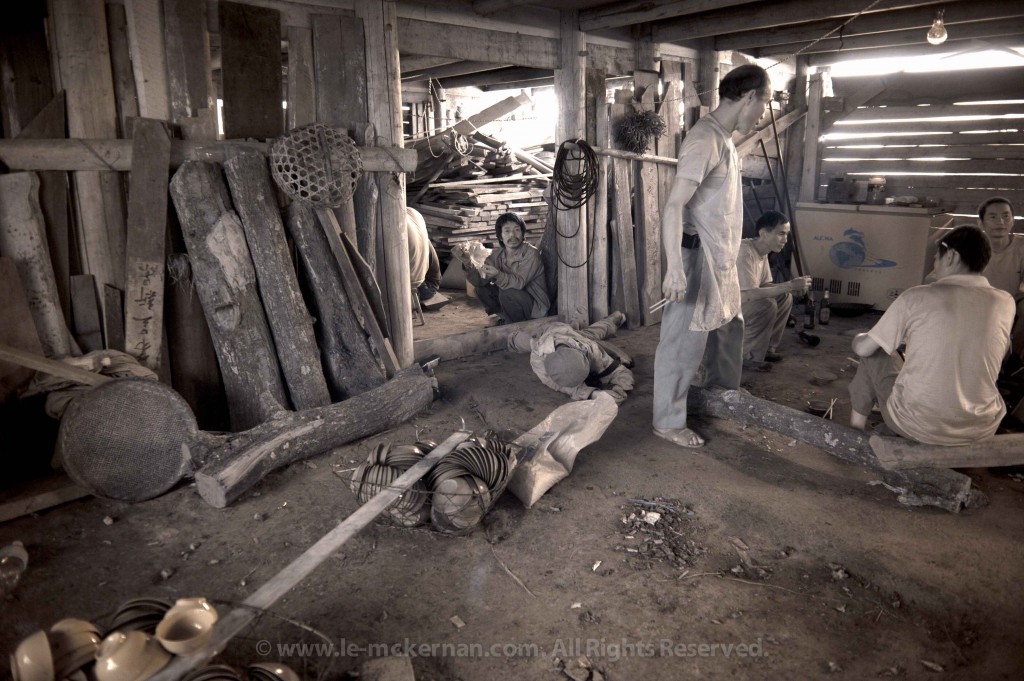
Funeral celebration in a small hilltop village

The view from the kitchen — pork is the centerpiece of celebration
The second funeral celebration was a much larger affair. In addition to the ritual ceremony performed by the head shaman, the evening included fireworks, music, and dancing. For this event, five adult pigs were killed. (For more information about this event, please see the travel blog on Guizhou.)
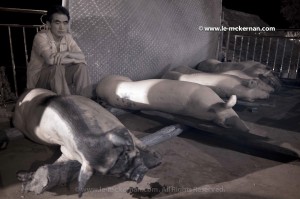
Poultry:
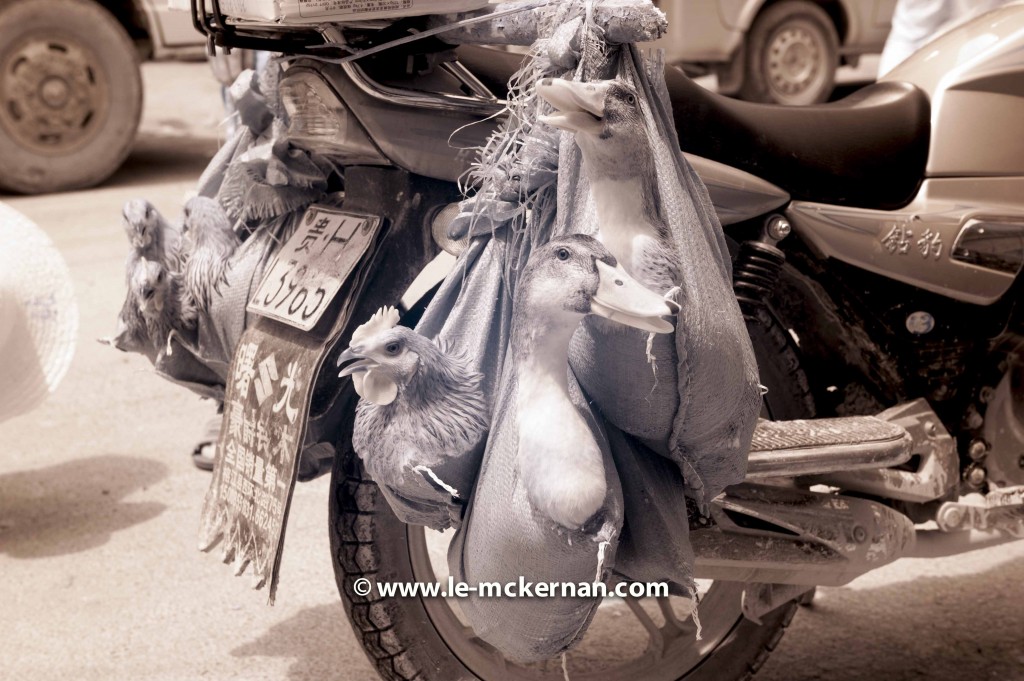
Life as poultry in China is no better or easier than that of pigs. No matter how small, every market that we visited had live poultry for sale. In one wet market, we witnessed the full slaughter process. Not a pretty sight but it was very insightful to see the end-to-end process as documented in the below photographs.
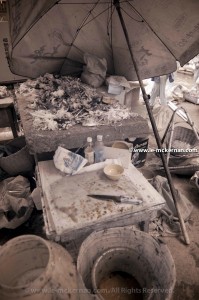
the killing zone . . .
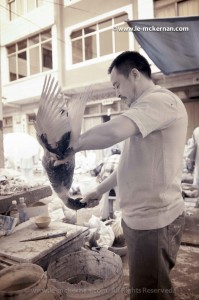
Step 1: cut neck and drain blood

Step 2: drop body into bucket until duck is fully dead (it thrashes about for about a minute)

Step 3: duck is immersed in a waxy-like liquid for a few minutes

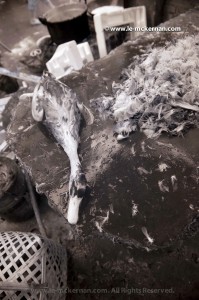
Step 4: remove duck from waxy liquid and allow to cool. Then, pluck the feathers
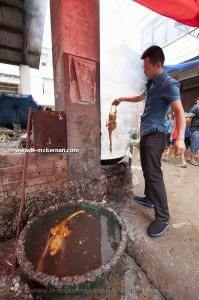
Step 5: dunk duck into another vat for a few more minutes. Then remove and dunk into cool water (now red with blood).
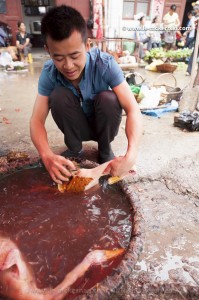
Step 6: once cooled off, proceed to rip off the skin/residual feathers.
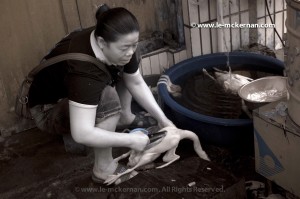
Step 7: rinse duck and proceed to cut it up for consumption.
DOGS:
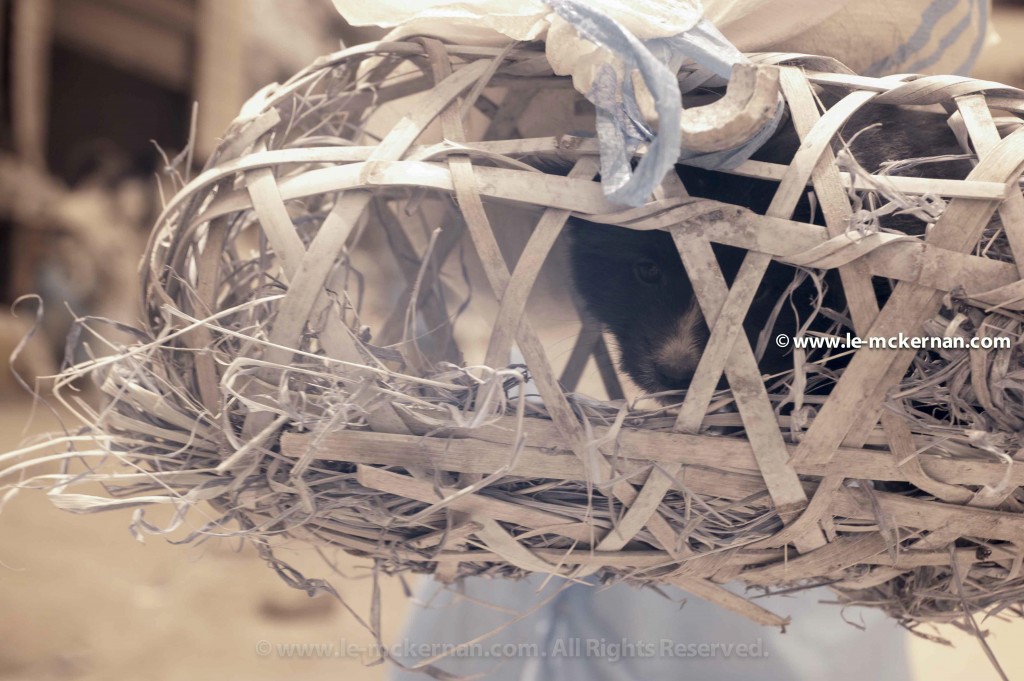
Anyone writing a travel blog about Guizhou, China cannot escape the mention of dogs as food. (This is evident in the Financial Times article about the region whereby the daughter of the author begs the writer not to eat the brown dogs as brown dogs are reputably tastier!) But what is also inescapable is China’s history of famine — and the history is within living memory. As such, there isn’t much sentimentality about animals as pets. And whilst it may cause discomfort to animal lovers to see animals treated as commodities (as foodstuff as well as for fighting), this is a fact of life in mainland China.
The bizarre aspect is that we saw people selling dogs in markets and yet there are many stray dogs about. (Why pay for dogs when you can snatch a stray easily?) In addition, we saw dogs that were clearly pets — in Kali, we actually saw a Siberian husky (purebreed) in the park going for an evening walk with the owner and in the villages, we saw dogs will collars (with bells attached). Moreover, in a restaurant that serves dog meat, we saw that it had a puppy as a pet (not in chains or in a bamboo cage — telltale signs that it is destined for the pot).
We were careful not to eat dog meat whilst there. But, for the average person in Guizhou, it is the equivalent as us eating chicken!
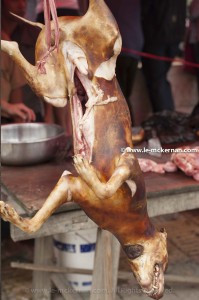
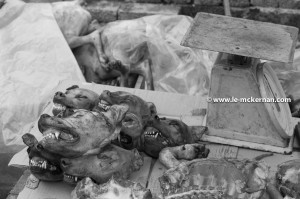
Streetfood:
There was a vibrant night food market by the stadium in Kali. As our visit coincided with the London 2012 Summer Olympics and given the strong local interest in the games, the city officials have installed large TV screens around the stadium. As such, we were able to watch the games whilst drinking and snacking al fresco.
The tastiest dish (and the most surprising) was the grilled river crabs. These were beautifully spiced and grilled. They are eaten with shells on. As the shells were soften by the grill, they were just the right level of crunchy and completely yummy!!!

A Last Word on Staying Healthy While Eating in China . . .
It is a testimony to our tour leader and the local fixers that no one in our group (total size is 9) fell ill during our 2 weeks excursion around Guizhou. While there, we ate at local restaurants (often little ‘mom and pop’ shops on the street) — there were no McDonald’s or western restaurants. Even if there were, we tried to avoid them altogether as the goal was to go local.

The list below are steps we’d taken to help give ourselves the best chance to avoid the little nasties that often plague travellers.
- Have very good fixers as they would chose the best-available restaurant in the vicinity.
- Clean hands with sanitizers before eating.
- We had our own chopsticks, spoons and drinking mug. Before eating, we would clean these with alcohol wipes.
- Wipe off any water from bowls before using them.
- If sharing communal food, then have serving utensils. If not available, then use the other end (i.e. the clean end) of one’s chopsticks when serving from the communal plate.
- Avoid uncook food such as salads. Most food in China is fried in very hot oil so we were reasonally assured that any pathogens are killed. (Our fixers knew not to order uncooked food.)
- If eating fruits, then do not eat the skin.
- Beer, wine and bottled water only. No ice. No fruit juices.
- Relax and enjoy the food. Hangups about food (or obsession with breakfast bars, etc.) will lead to anxieties and possibly constipation (if eating only cereal bars — too much fiber!).

Enjoy!
Tram’s TOP 20 images . . . .
This post actually started out as a simple (and private) exercise to pick out my absolute favourites and then to try to understand what it is exactly that I liked about them. The ultimate goal is to understand what makes a great photo and more importantly, what can I learn from my past images. I fully admit that many of the images I’ve selected have myriad technical flaws — but, this is a personal compilation and is therefore completely subjective. As this project has grown, I’ve added technical details (where needed) as well as the backstory to enliven the images. In addition to this, I’ve compiled a list of my favourite images that Bruce has taken … whether he’ll do his own TOP 20 list is depends on how much time he has …
(For my favourite RugbySevens images, please review this link.)
Tram’s pick of her TOP 20 images:
Nowadays I almost always photograph with either my converted infrared cameras or with my iPhones (predominately using the Hipstamatic app). My unconverted (or, normal) camera is usually left inside my camera bag and I tend to use this as a backup camera (if I remember to pack it). As such, it is therefore deeply ironic that my all-time favourite image was taken with a “normal” SLR camera.
This is a special image that still resonates because it was this image that gave me the confidence to photograph more. I owe a debt of gratitude: to my uncle Chris for inspiring me to pick up this hobby; to Bruce because we are sooooooo competitive and thus I’m always trying to take better photographs than him; to photographer Nevada Wier for convincing me that I should be shooting in RAW format instead of JPEGS (thankfully this was captured in RAW!!!!); and, to this mystery lady who really got me thinking that I could take decent images!
(2) I went to Cheung Chau island to photograph the annual Bun Festival. Unbeknownst to me, the municipality sponsored an opera to coincide with the festival. As I had hours to kill before the start of the festival, I used all of my American charm to curry favour backstage access. The performers and stage hands were wonderful! Although I was most definitely in the way (the backstage area was TINY!), they indulged me with their generosity and I was there for about an hour.
This image is particularly special as I was using my new D700 camera for the first time since it’s conversion to infra-red. Because the camera’s sensor still thinks it is capturing normal light (and infra is a different wave length), autofocus did NOT work. As such, I had to use LiveView to manually focus and LV is infinitely slower and very cumbersome. Furthermore, the lightening backstage was poor and came from harsh fluorescent bulbs. Needless to say, I was cursing at myself for ‘vandalising’ my new D700. But something just clicked and inexplicably I managed to get this amazing image. I simply love the way infrared captured this performer’s hands and how the light gives the makeup a mask-like appearance!
(3) A lucky shot! What more can I saw other than I was at the right place and at the right time. (And thank goodness the light in the arena was good — otherwise, the infrared camera would have it’s focus in a real twist!) This image encapsulates serendipity! And sometimes, that is what a photographer needs in his/her camera bag.
(4) I love, love, love this monklet! I was on a photography tour with Nevada Wier and we gatecrashed into a study hall at a monastery in Yangoon. The senior monk permitted us to photograph the monklets practicing their chants. They were all wonderfully photogenic (and patient with us!). But this monklet was a standout for me. I love the fact that he has an ink tattoo on his legs and that the red robe did not rob him of his boyish antics. This was an unstaged photo opportunity which meant that I had to work in a ‘real’ environment. The room was actually too dark for my normal day lens and I didn’t want to use flash as it would completely ruin the atmosphere (as well as piss off the other photographers). Thankfully, prior to this trip, Bruce convinced me to buy a 50mm lens which made a world of difference! I was able to crack open the aperture and take advantage of the late afternoon light coming in from a tiny window. (Thank you Brucey!!!)
(5) When I photographed the Haghia Sophia from afar, I didn’t realised how well the infrared camera would bring out the landscape in the background or how well it would render the Bosphorus. As such, the infrared light gave it a distinctive and other-worldly effect (almost something from ‘Game of Thrones’). In effect, it gave an much beloved (and much photographed) iconic building a unique twist.
(6) Backstage at the opera at the Cheung Chau Bun Festival (again). After the success of the previous year, I returned in 2013 as I wanted to photograph the performers again — but this time with my iPhone (Hipstamatic – lens: Tinto 1884; fils: C-Type Plate; no flash). I’d focused on the face and the Hipstamatic application did the rest. I just loved the way Hipstamatic blurred everything other than the focal point. As a result, this gave the performer an immediate virtual spotlight!
(7) This was an once-in-a-lifetime image for me …. and I almost missed the opportunity. I was due to meet up with Bruce and a friend at a bar for evening cocktails and I almost didn’t take my camera along. Although a D70s isn’t huge, it is rather clunky to carry for an evening event. But something told me to take the camera with me. So, in addition to having a healthy dosage of serendipity in my camera bag, I also have to thank the photography gods for giving me good intuition!
(8) I just love the way infra-red captured the texture of the fur coat as well as the horse mane. This gives the image a depth and a uniqueness. But this image has a special story attached to it. As a digital photographer, it is easy to become numb during the image-processing phase (especially when there are hundreds of images to scope). As such, it is very easy to overlook an image. This particular image was one that was bypassed. Many months after the initial processing, I’d reviewed some other images and noticed this one. As I developed the image, it occurred to me how special and beautiful it us. As such, this image serves as a cautionary tale.
(9) “Will he? Won’t he?” . . . I love the way this image tells a story at a precise moment in time. Of the thousand of images I’d taken that day, this is still my clear favourite because in one image, I see: hope, fear, aggression, and possible salvation.
(10) This image is a standout for me for two reasons. First, I love the texture of the elephants’ skins and the way the light bounces off the wet patches on the skin. Second, I love the composition — especially in the way the two adult elephants are in profile, adjacent to each other and perfectly aligned to form a visual trickery. Specifically, the two elephants appear to merge together and as a result, a frontal view of a “face” appears.
(11) I just love the way my infrared camera captures light — especially when the subject is backlit. In addition, I love the various textures captured in this image. As a result, this becomes a richly layered image for me.
(12) This image (uncertain if it is better in portrait or landscape mode) is a ‘love-it-or-hate-it image’ because there are many technical flaws. Personally, I love it. Perhaps it is because I know that this was a technically challenging event to photograph and as such, to get an image like this one is personally rewarding.
The Esala Perahera festival in Sri Lanka was an evening festival. Moreover, it was a crowded event and as spectators, Bruce and I were confined to our seats (five rows back from the street and with people all around us). As such, we had to photograph where we were planted — we could not move, shoot high or shoot low. An extra challenge I had was that I was photographing with my D70s and it was recently converted to infrared. In insufficient light, an infrared camera would clonk out as it could not focus properly. In addition, my D70s was a starter camera and as such I could not crank up the ISO without getting a lot of background noises. Thankfully, we were there for three days and had three opportunities to photograph the festival.
I love the way the infrared camera captured the heat haze. In addition, I love the way the mahout is enveloped in heat, fire and light. The setting is almost demonic and hellish. It is surreal. It is eye-catching. Love it or hate it, it’s the kind of image that if you saw it in a magazine, you would stop to ponder it for a few seconds — this is a hallmark of the kind of photograph that I want to take!
(13) I know it’s cheating to count a set of three images as one image, but these three images form the basis of my ‘Sri Lankan Victorian Ghosts’ portfolio and now serve as the foundation for my experimental infrared images. They are on my list of top images because they are hugely important and very influential in my development as a photographer. The absolute truth is that these were mistakes — and I actually came _very_ close to deleting them. But, once again I owe a debt of gratitude to Nevada Wier who gave me very sage advice: don’t delete an image straight from your camera; always view the image on a proper screen first before deciding that the image is truly unsalvageable. (Thank you x100 Nevada!) The morning after the Esala Perahera festival, I’d reviewed my images and I was quite struck by the elderly lady sitting on the street (middle photo in the set). There was an etherial and ghostly beauty and I was captivated.
As previously mentioned, the above images were ‘mistakes’ in that the effects were unintentional. Due to the poor lighting of the street festival, I had to crank up the ISO, reduce the shutter speed and play around with the aperture. In addition, I could not use a tripod and therefore my images were subjected to camera shake. Nonetheless, I love the outcome. Nowadays, after I have taken my ‘insurance shot’ (another great tip from Nevada), I now try to play around and replicate what I’d accidentally did in Sri Lanka . . .
(14) While I love this image because it is beautiful (the image speaks for itself), this image is on the list because it played a huge role my development. First, it gave me confidence that I could translate what I see into something photogenic. Second, it seriously broke my heart.
When this photograph was taken, I was very much a novice with my camera’s functions. As a result, I relied heavily on it’s preset modes (i.e. auto, landscape, portraits, night images, etc.). At the time, I told myself that (unlike geeky Bruce) I really didn’t need to master shutter speed, depth of field, etc. because I had a smart camera (Nikon D70s) and thus as long as I had the correct setting, I would be all right. WRONG! I think I was photographing this in either landscape or portrait mode. Regardless, the shutter speed was 1/60 second and as such, the woman’s face was too soft. (Image has since been sharpened in Photoshop.) I’d cursed myself repeatedly for being so foolish and as a direct result of this image, I forced myself to learn how to use my camera and more about photography.
(15) In this image, the model was getting quite bored. For the past 10 minutes, she was “working the cameras” for the roomful of photographers. At first, she was thrilled to be the center of attention. But, as the click-click-click became monotonous, she started to become disinterested and lost her focus. And from this came an unguarded moment which resulted in this beautiful portrait.
(16) I am particularly fond of this image because it is unstaged and spontaneous. Bruce and I were hosted by Manaa and his family for seven nights in western Mongolia. Our host was a champion Eagle Hunter and therefore was very comfortable (and proud) to be photographed. After a meal, he gazed out of the window. I had my iPhone next to me and I immediately took a few snaps using Hipstamatic (lens: Tinto 1884; fils: C-Type Plate; no flash) to capture the moment. Of the many, many, many images that I’ve taken on Manaa over the week, this is my clear favourite because it showed him in his true light — dignified and serene!
(17) ‘Go Girl! Go!’ My heart still skips a beat when I see this image as it is very simple and yet very empowering!
(18) I love my iPhone because it is perfect for a quick snap. In particular, I love the way Hipstamatic (Tinto 1884 lens and D-Type film) gave this image a vintage feel. As such, Hipstamatic transformed a interesting picture (with the odd juxtaposition of old and new) into something more cohesive. In other words, the vintage effect reinforces the narrative and thus reinforces the odd juxtaposition.
(19) This image would never quality as ‘postcard pretty’ — and this is why I love this photograph. It is unconventional and it is a realistic capture of everyday life in the markets somewhere (anywhere) in China. I particularly like the flow in the image — ie the eyes are taken from right to left — and that the image is richly layered.
(20) I love the intimacy and sense of serenity captured in this moment with the Eagle Hunter. The extra zing in this image comes when one contrasts the hunter’s softness with the sharpness, strength and power coming from the eagle.
. . . and other favourite images that didn’t quite make it onto the Top 20 list, but are still special (to me) nonetheless . . .
(21) Although there are many technically stronger images of this horse wrestling match in the Kyrgyzstan album and although this image is compositionally weak, I prefer this image above the others because for some inexplicable reasons, I connect with this image more. Perhaps it is the expression on the face … Or, it is because there is a fluidity in his movement (ie the rider leans back and away from the ‘horse head punch’) that appeals. Regardless, this image challenges me because I can’t quite explain why I like it so much.

Bruce has often said that he’d envied my American “unembarrassability” as this enabled me to ask complete strangers for their permission to photograph them and/or, to get really up-close to the subject (rather than rely on zoom lenses). As such, he said that this characteristic makes me a stronger portrait photographer. While I appreciate his compliments, his portraits aren’t too bad either :>) … In fact, some of his are actually amazing – to see Bruce’s best portraits, please click here.
This image didn’t make onto the Top20 list because it was instinctively captured as a Mongolian horseman flew past me. The backstory behind this image was that I have just taken my “insurance shots” of the Mongolian riders playing their horse games. As such, I decided to be artsy-fartsy instead and experimented with shutter speeds. In addition, I tried to do a few panning shots as the horsemen raced by. During a lull, I was speaking to Bruce and in the distance I saw a horseman racing towards my direction. Without thought, I immediately grabbed my camera and started to take shots. Sadly, the shutter speed was 1/30 second so of the four images I managed to snap, all but one were streaks of blurred blah. But in a sea of blah, this stunning image emerged.
This isn’t a complex image; in fact, it is nothing more than a bowl with what was left from THE BEST RAMEN NOODLES I’ve ever had (street vendor on the main street adjacent to the Tokyo Fish Market). Nonetheless, I love the simplicity, symmetry, colours and patterns in this image (iPhone-Hipstamatic: Tinto 1994 lens and Blanko film).
(( kindly note that this list is currently “work in progress” ))
OP-ED: Travelling with Nevada . . .
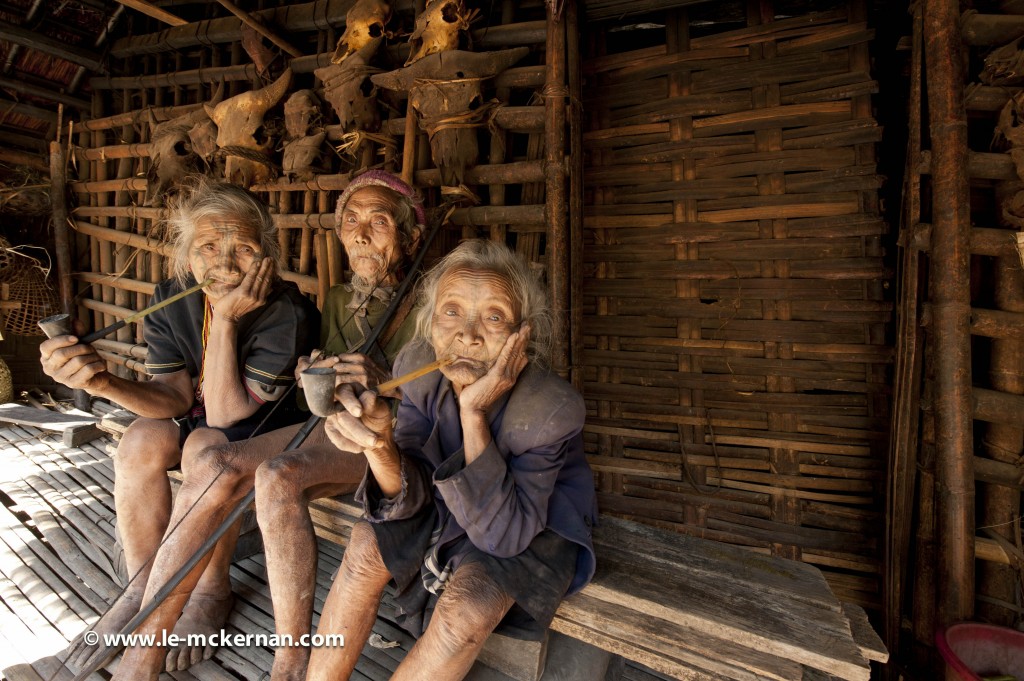
Burma
I am often asked about our travel arrangements as well as asked for recommendations about who to use. More often than not, we travel independently and armed with nothing more than a copy of The Lonely Planet and some research from the internet. But from time to time, we find it more advantageous to use an expert guide — especially when we want to visit a remote or ‘logistically challenging’ area.
By far and away, the best expert guide we’ve used (and have travelled with three times thus far) is Nevada Wier. First and foremost, Nevada is a professional photographer and she runs 3-4 private photography tours a year. So as avid photographers, we love to travel and photograph remote places and people with Nevada. In addition, we love travelling with Nevada because her trips are truly unique. Whilst many tour companies advertise about their ability to “get under the skin” of a place, Nevada actually delivers. She has a fantastic network of local agents & contacts and as such she leverages these connections to give her group the best possible travel experience. For example, one of the major highlights of the 2012 trip to Guizhou China was being invited to the funeral of a local teacher in a remote village. Whilst it may sound bizarre and morbid, the funeral was actually a village celebration of the man’s life and we were treated as honoured guests. In Burma, Nevada arranged special travel permits for us to not only visit but to spend 2 nights with the Chin hill tribe. This entailed sleeping on the floor in a hut and spending three days with the tribe. It was a truly authentic and ‘off the beaten’ track experience. Hard — yes! But, fantastic nonetheless.
The hardest part about a Nevada Wier trip is getting your RSVP in before it completely fills up. Nevada keeps the group size small and it is not uncommon for her trip to fill up within hours of the first email notice. Nevada does not advertise her trips to the general public (in truth, there is no need as her trips are already in high demand); instead, she has a list of past clients and people that she knows. (I like to call this the ‘non-looney list’ because it means that the people she invites on her trips are people that she knows and has vetted — i.e. the alumni of past tours and her workshops.) That said, she does run a ‘special list’ for people who have contacted her personally with their interests in her tours; if her tours are not immediately filled, then she emails those on the ‘special list’.)
Although her trips are relatively more expensive than other ‘travel photography tours’, in my opinion, they are worth it. I particularly like the fact that she has ‘fully baked in’ the costs of tipping and miscellaneous (expected) costs into the tour costs. Thus, her group is completely and totally liberated from having to deal with tipping issues.
+ + + +
Please note that this is an independent review. We do not benefit from this review and we are not affiliated with Nevada Wier in any way.
We first travelled with Nevada in 2009 when she headed the National Geographic Expedition to India. We then travelled with her to Burma in 2011 and then again in rural China in 2012.

